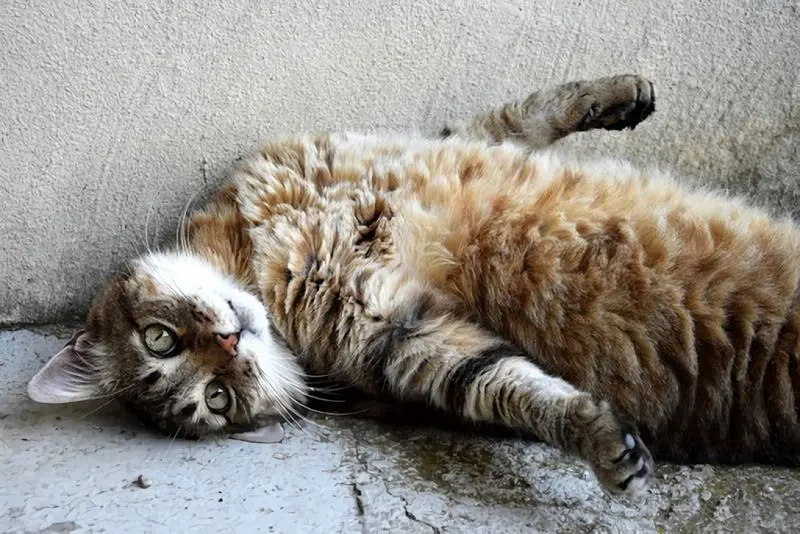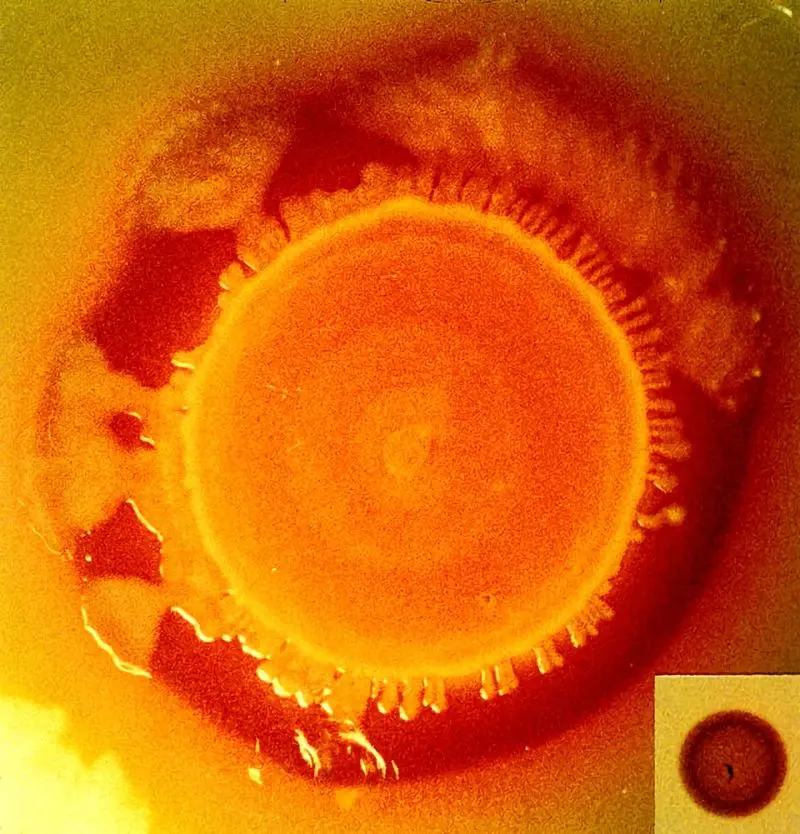 ↪ Description - LIDOCAINE HCL
Dogs: a) Initially, IV bolus of 2 - 4 mg/kg given slowly; then begin constant IV infusion of 25 - 80 micrograms/kg/min (Moses 1988) b) 4 mg/kg bolus STAT, then begin 50 micrograms/kg/min constant infusion. If no effectrepeat 4 mg/kg bolus or if effect is lost... ↪ Read more
↪ Description - LIDOCAINE HCL
Dogs: a) Initially, IV bolus of 2 - 4 mg/kg given slowly; then begin constant IV infusion of 25 - 80 micrograms/kg/min (Moses 1988) b) 4 mg/kg bolus STAT, then begin 50 micrograms/kg/min constant infusion. If no effectrepeat 4 mg/kg bolus or if effect is lost... ↪ Read more Veterinary Drug Handbook (VDH) is the reference veterinarians turn to when they want an independent source of information on the drugs that are used in veterinary medicine today.
-
 Is veterinary Liniment Gel safe for humans?
Is veterinary Liniment Gel safe for humans? -
 Giving Your Cat A Pill
Giving Your Cat A Pill -
 Dog Aggression
Dog Aggression -
 Dogs May Help Boost Infant Health
Dogs May Help Boost Infant Health -
 Animal-Assisted Therapy, Veterinary Social Work, & Social Work With People & Pets in Crisis
Animal-Assisted Therapy, Veterinary Social Work, & Social Work With People & Pets in Crisis -
 On-demand veterinary service gives advice on poorly pets
On-demand veterinary service gives advice on poorly pets -
 Should we stop throwing sticks for dogs?
Should we stop throwing sticks for dogs? -
 What does PU/PD mean in veterinary medicine?
What does PU/PD mean in veterinary medicine? -
 Can breathing in cat hair be harmful?
Can breathing in cat hair be harmful? -
 Bill calls for ban on sales of dogs, cats in Maine pet stores
Bill calls for ban on sales of dogs, cats in Maine pet stores -
 Common Meanings Of Cat Behavior
Common Meanings Of Cat Behavior -
 What does DVM stand for in veterinary?
What does DVM stand for in veterinary? -
 Curing Bad Cat Breath
Curing Bad Cat Breath -
 New Tracking Tool for Pathogen Investigators
New Tracking Tool for Pathogen Investigators -
Can binturongs be kept as pets?
-
 How long do instruments stay sterile after autoclaving veterinary?
How long do instruments stay sterile after autoclaving veterinary?
Doses - LIDOCAINE HCL
 ↪ Description - LIDOCAINE HCL
Dogs: a) Initially, IV bolus of 2 - 4 mg/kg given slowly; then begin constant IV infusion of 25 - 80 micrograms/kg/min (Moses 1988) b) 4 mg/kg bolus STAT, then begin 50 micrograms/kg/min constant infusion. If no effectrepeat 4 mg/kg bolus or if effect is lost... ↪ Read more
↪ Description - LIDOCAINE HCL
Dogs: a) Initially, IV bolus of 2 - 4 mg/kg given slowly; then begin constant IV infusion of 25 - 80 micrograms/kg/min (Moses 1988) b) 4 mg/kg bolus STAT, then begin 50 micrograms/kg/min constant infusion. If no effectrepeat 4 mg/kg bolus or if effect is lost... ↪ Read more LIDOCAINE HCL
 ↪ Doses - LIDOCAINE HCL
Chemistry - A potent local anesthetic and antiarrhythmic agent, lidocaine HCl occurs as a white, odorless, slightly bitter tasting, crystalline powder with a melting point between 74° - 79°C and apKa of 7.86. It is very soluble in water and alcohol. The pH... ↪ Read more
↪ Doses - LIDOCAINE HCL
Chemistry - A potent local anesthetic and antiarrhythmic agent, lidocaine HCl occurs as a white, odorless, slightly bitter tasting, crystalline powder with a melting point between 74° - 79°C and apKa of 7.86. It is very soluble in water and alcohol. The pH... ↪ Read more Doses - LEVOTHYROXINE SODIUM
 ↪ Description - LEVOTHYROXINE SODIUM
Dogs: For hypothyroidism: a) Use a trade name product initially, with a starting dosage of 20 micrograms/kg bodyweight PO q12h. Some dogs may only require once a day dosing, but initially, all dogsshould receive twice daily dosing. After clinical... ↪ Read more
↪ Description - LEVOTHYROXINE SODIUM
Dogs: For hypothyroidism: a) Use a trade name product initially, with a starting dosage of 20 micrograms/kg bodyweight PO q12h. Some dogs may only require once a day dosing, but initially, all dogsshould receive twice daily dosing. After clinical... ↪ Read more LEVOTHYROXINE SODIUM
 ↪ Doses - LEVOTHYROXINE SODIUM
Chemistry - Prepared synthetically for commercial use, levothyroxine sodium is the levo isomer ofthyroxine which is the primary secretion of the thyroid gland. It occurs as an odorless, light yellowto buff-colored, tasteless, hygroscopic powder that is very... ↪ Read more
↪ Doses - LEVOTHYROXINE SODIUM
Chemistry - Prepared synthetically for commercial use, levothyroxine sodium is the levo isomer ofthyroxine which is the primary secretion of the thyroid gland. It occurs as an odorless, light yellowto buff-colored, tasteless, hygroscopic powder that is very... ↪ Read more Doses - LEVAMISOLE
 Dogs: As an immune stimulant: a) For recurrent cutaneous infections: 2.2 mg/kg PO every other day, with appropriateantimicrobial therapy. (Rosenkrantz 1989) b) 0.5 - 2 mg/kg PO 3 times a week. (Kirk 1989) c) For adjunctive therapy in dogs with chronic pyoderma: 0.5 - 1.5 mg/kg PO 2-3 times aweek... ↪ Read more
Dogs: As an immune stimulant: a) For recurrent cutaneous infections: 2.2 mg/kg PO every other day, with appropriateantimicrobial therapy. (Rosenkrantz 1989) b) 0.5 - 2 mg/kg PO 3 times a week. (Kirk 1989) c) For adjunctive therapy in dogs with chronic pyoderma: 0.5 - 1.5 mg/kg PO 2-3 times aweek... ↪ Read more LEVAMISOLE
 ↪ Doses - LEVAMISOLE
Chemistry - The levo-isomer of dl-tetramisole, levamisole has a greater safety margin than doesthe racemic mixture. It is available commercially in two salts, a phosphate and a hydrochloride. Levamisole hydrochloride occurs as a white to pale cream colored, odorless or... ↪ Read more
↪ Doses - LEVAMISOLE
Chemistry - The levo-isomer of dl-tetramisole, levamisole has a greater safety margin than doesthe racemic mixture. It is available commercially in two salts, a phosphate and a hydrochloride. Levamisole hydrochloride occurs as a white to pale cream colored, odorless or... ↪ Read more Doses - LACTULOSE
 Dogs: For hepatic encephalopathy: a) 15 - 30 ml PO qid; adjust the dosage to produce 2-3 soft stools per day (Cornelius and Bjorling 1988) b) 30 - 45 mls PO q8h (Kirk 1986) c) 5 - 15 ml PO tid; adjust dose to induce 2-3 soft stools per day; reduce dosage if diarrhea develops. In certain cases,... ↪ Read more
Dogs: For hepatic encephalopathy: a) 15 - 30 ml PO qid; adjust the dosage to produce 2-3 soft stools per day (Cornelius and Bjorling 1988) b) 30 - 45 mls PO q8h (Kirk 1986) c) 5 - 15 ml PO tid; adjust dose to induce 2-3 soft stools per day; reduce dosage if diarrhea develops. In certain cases,... ↪ Read more LACTULOSE
 ↪ Doses - LACTULOSE
Chemistry - A synthetic derivative of lactose, lactulose is a disaccharide containing one molecule of galactose and one molecule of fructose. It occurs as a white powder that is very slightly soluble in alcohol and very soluble in water. The commercially available... ↪ Read more
↪ Doses - LACTULOSE
Chemistry - A synthetic derivative of lactose, lactulose is a disaccharide containing one molecule of galactose and one molecule of fructose. It occurs as a white powder that is very slightly soluble in alcohol and very soluble in water. The commercially available... ↪ Read more Doses - KETOPROFEN
 ↪ Description - KETOPROFEN
Dogs: As an antiinflammatory/analgesic: a) For surgical pain: 2 mg/kg IV, subQ or IM initially once; 1 mg/kg subsequent dailydoses For chronic pain: 2 mg/kg PO initially, then 1 mg/kg PO daily (Johnson 1996) Cats:As an antiinflammatory/analgesic: a) For surgical... ↪ Read more
↪ Description - KETOPROFEN
Dogs: As an antiinflammatory/analgesic: a) For surgical pain: 2 mg/kg IV, subQ or IM initially once; 1 mg/kg subsequent dailydoses For chronic pain: 2 mg/kg PO initially, then 1 mg/kg PO daily (Johnson 1996) Cats:As an antiinflammatory/analgesic: a) For surgical... ↪ Read more KETOPROFEN
 ↪ Doses - KETOPROFEN
Chemistry - A propionic acid derivative nonsteroidal anti-inflammatory agent, ketoprofen occursas an off white to white, fine to granular powder. It is practically insoluble in water, but freelysoluble in alcohol at 20°C. Ketoprofen has a pKa of 5.9 in a 3:1... ↪ Read more
↪ Doses - KETOPROFEN
Chemistry - A propionic acid derivative nonsteroidal anti-inflammatory agent, ketoprofen occursas an off white to white, fine to granular powder. It is practically insoluble in water, but freelysoluble in alcohol at 20°C. Ketoprofen has a pKa of 5.9 in a 3:1... ↪ Read more Doses - KETOCONAZOLE
 (Note: Clinical antifungal effects may require 10-14 days of therapy)Dogs: For coccidioidomycosis: a) For the systemic form of the disease: 5 - 10 mg/kg PO bid; For the CNS form: 15 - 20mg/kg PO bid. Treatment should persist for a minimum of 3-6 months. Animals withboney lesions or relapses after... ↪ Read more
(Note: Clinical antifungal effects may require 10-14 days of therapy)Dogs: For coccidioidomycosis: a) For the systemic form of the disease: 5 - 10 mg/kg PO bid; For the CNS form: 15 - 20mg/kg PO bid. Treatment should persist for a minimum of 3-6 months. Animals withboney lesions or relapses after... ↪ Read more KETOCONAZOLE
 ↪ Doses - KETOCONAZOLE
Chemistry - An imidazole antifungal agent, ketoconazole occurs as a white to slightly beigepowder with pKas of 2.9 and 6.5. It is practically insoluble in water.Storage, Stability, Compatibility Ketoconazole tablets should be stored at room temperature inwell-closed... ↪ Read more
↪ Doses - KETOCONAZOLE
Chemistry - An imidazole antifungal agent, ketoconazole occurs as a white to slightly beigepowder with pKas of 2.9 and 6.5. It is practically insoluble in water.Storage, Stability, Compatibility Ketoconazole tablets should be stored at room temperature inwell-closed... ↪ Read more Popular Diagnoses
Packed cell volume (PCV, hematocrit) Reflex ovulator Mucolytic Microfilaricide Bronchodilator Hematocrit Glucocorticoid Monoamine oxidase inhibitor (MAOI) ↪ All veterinary diagnoseOther Diagnoses
Hypoplasia Hypothyroidism Icterus Immune-mediated reaction or disease Immune system Immunity Immunization ImmunodeficiencyPopular Veterinary Clinics
VCA Welborn Animal Hospital, 7860 Washington Avenue Kansas City, KS 66112 USA MedVet Columbus, 300 East Wilson Bridge Road, Worthington, OH Rutland Veterinary Clinic & Surgical Center, 90 East Pittsford Road, Rutland, VT VCA Paradise Valley Emergency Animal Hospital, 6969 East Shea Boulevard Suite 150 Scottsdale, AZ 85254 USA Connecticut Veterinary Center & Pet ER, 470 Oakwood Ave West Hartford, CT 06110 USA Norway Veterinary Hospital, 10 Main St P.O. Box 273 Norway, ME 04268 USA Craig Road Animal Hospital, 5051 West Craig Road, Las Vegas, NV Abri Veterinary Hospital Inc, 1449 Trademart Boulevard Winston-Salem, NC 27127 USA ↪ All veterinary clinicsOther Veterinary Clinics
Maywood Veterinary Clinic, 138 West Pleasant Avenue Maywood, NJ 07607 USA Arlington Dog & Cat Hospital, 857 Passaic Avenue Kearny, NJ 07032 USA VCA Rutherford Animal Hospital, 755 Rutherford Avenue Rutherford, NJ 07070 USA Secaucus Animal Hospital, 190 County Avenue, Secaucus, NJ VCA West Mesa Animal Hospital, 2611 Coors Blvd, NW Suite B Albuquerque, NM 87120 USA VCA Adobe Animal Hospital, 5920 Fourth Street, NW Albuquerque, NM 87107 USA VCA Wyoming Animal Hospital, 1300 Wyoming Blvd NE Albuquerque, NM 87112 USA VCA Veterinary Care Animal Hospital and Referral Center, 9901 Montgomery Blvd. Albuquerque, NM 87111 USAPopular Drugs
DOXYLAMINE SUCCINATE Doses - PENICILLIN V POTASSIUM Doses - METHYLPREDNISOLONE, METHYLPREDNISOLONE ACETATE, METHYLPREDNISOLONE SODIUM SUCCINATE ACEPROMAZINE MALEATE Doses - PREDNISOLONE, PREDNISOLONE SODIUM SUCCINATE, PREDNISOLONE ACETATE, PREDNISONE Doses - FURAZOLIDONE Doses - FERROUS SULFATE Doses - LEVAMISOLE ↪ All veterinary drugOther Drugs
Controlled 1% Iodine Teat Dip Noromycin 300 LAOxytetracycline Injection 300 mg/mL 300 PRO LA (Oxytetracycline) Injection ANTIBIOTIC EQUIDONE® Gel (domperidone) Novox® Caplets (carprofen), 25 mg, 75 mg and 100 mg Sergeant's Vetscription Benadene For Puppies and Dogs Posatex™ Otic Suspension (Orbifloxacin, Mometasone Furoate Monohydrate and Posaconazole, Suspension) Breath Spray for Dogs and CatsPopular Terms
Subalbinotic Steatis Uteroverdin Paradoxical CSF acidosis Figure of 8 suture pattern Nerve root signature Ovariohysterectomy Abrev OVH Signalment ↪ All veterinary termOther Terms
Homozygous Hooded Hoof pick Hoof testers Hoof wall Hopper feeding Hordeolum Horizontal siloveterinary-help.com
© 2011-2025 Veterinary Clinics, Diagnoses, Terms and Drug Handbook Online

